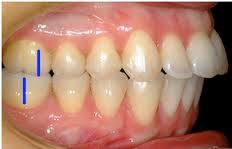Over the past 20 years dentistry has seen a dramatic increase in the use of dental implants. What was once an “experimental†or unproven treatment modality is now supported by an extensive research base. The vast majority of dental implant research is centered around the use of endosseous implants for replacement of missing teeth. Recently, the application of implants for use in other specialties has been explored. Previously, the use of dental implants within the specialty of orthodontics was limited to integration of implants into treatment plans strictly to facilitate tooth replacement. The orthodontic treatment that has traditionally been involved in treatment plans including dental implants has been limited to creating space or aligning roots for subsequent placement of implants. The use of dental implants as a direct adjunct to orthodontic treatment has been more limited until recently, but the potential exists for implants to play an important role in enhancing successful treatment outcomes. Continue reading
Tag Archives: malocclusion
Skeletal and dental changes brought by Frankel appliance Part 2
Whether or not there is an increase in size or acceleration of growth of the mandible is one of the major controversies in functional appliance therapy. Although many researchers have claimed that the FR causes extra mandibular growth, this study showed that there were no significant differences between the FR and control groups as far as mandibular movement is concerned, the mean FR movement being 4.1 mm, standard deviation 3.0 mm; the control 5.0 mm, and standard deviation 2.6 mm. As the 5.0-mm change in the control was due to normal growth, it can be assumed that the 4.1-mm change in the FR group was no more than normal growth rather than any effect of the appliance. The maximum value seen in the control was 14.2 mm and for the FR it was 12.8 mm; again, because this change in the controls was due to normal growth it must be assumed that even the maximum FR change was no more than normal growth change. That the size of the mandible is unaffected with the FR is supported by evidence from Creekmore and Radney, and Hamilton et al., who found no significant differences between FR and untreated patient groups. Continue reading
Oral habits
Common behaviors seen in children and adults with jaw deficits and subsequent speech and feeding disorders are that of maladaptive oral habits. Such habits include jaw clenching and teeth grinding (bruxism), excessive mouthing of objects, thumb and finger sucking, tongue sucking, lip chewing, nail biting, and extended bottle and pacifier use. These habits, when excessive or are continued past appropriate developmental necessity, can lead to poor dental health, be socially stigmatizing, and inhibit the development of speech clarity. Continue reading
Dental relevance of Down Syndrome Part 1
Midface dysplasia is a cardinal characteristic of persons with Down Syndrome (DS). Nose malformations including a flat broad bridge of the nose has been reported in 59-78% of these individuals. Ear malformations, including “lop” ears, low-set ears and ears with a flat or absent helix have been reported in 54%. Eye malformations are common. Epicanthal folds with slanting almond-shaped eyes (narrow palpebral tissue slanting toward the midline), which was responsible for the term mongoloid, are reported in 78%. Strabismus (cross eyes) is reported in 14-54% and nystagmus (constant involuntary cyclical movement of the eyeballs) and refractive errors are also common. The majority of persons with Down Syndrome exhibit brachycephaly (broad, short head) and lack of supraorbital ridges and hypotelerism (secondary to hypoplasia of the central face) are common findings. Absence of frontal sinuses and absent or reduced maxillary sinuses have been reported. Nasal septum or nasal conchal deviations are often observed which can produce a partially obstructed or narrow air passage and can contribute to the problem of mouth breathing. Continue reading
How to Evaluate Denture Occlusion
Denture occlusion is no different from natural teeth occlusion. Occlusion refers to your bite, to how well and how accurate the teeth come together and how well the top teeth fit into the bottom teeth when you bite together. If you experience pain when you bite down or chew food, your occlusion may be off and need adjustment. You evaluate denture occlusion the same way you evaluate natural teeth occlusion, with dental occlusion paper and a mouth mirror available from your dentist or a dental supply laboratory. Continue reading
Thumb Sucking and Development of Teeth
Suckling vs. sucking
Suckling
Suckling is a normal physiological reflex in infants, which consists of small nibbling movements of the lips. The movements stimulate the smooth muscles surrounding the milk ducts of the lactating mother to contract and squirt milk into the infant’s mouth. When the milk is squirted into the mouth, it is only necessary for the infant to groove the tongue to allow the milk to flow back into the throat. The tongue, however, must be placed front to contact with the lower lip, so that the milk is in fact deposited on the tongue. The tongue-to-lip apposition is so common that it is usually adopted at rest, and it is frequently possible to gently move the infant’s lower lip and notice that the tongue tip moves with it, almost as if they were glued together. The suckling reflex normally disappears during the first year of life.
 Sucking
Sucking
Nearly all modern infants engage in some sort of habitual non-nutritive sucking– thumb- or finger-sucking or sucking of a similarly shaped object. A vast majority do so during the period from 6 months to 2 years or later. Continue reading
